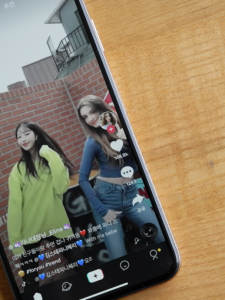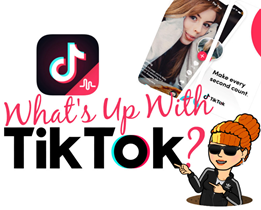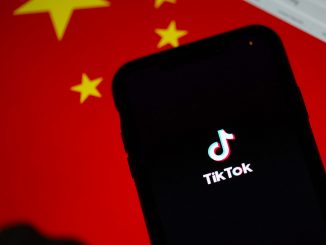
Introduction
In the booming Internet economy, the platform model is a typical business model. Tiktok as an emerging platform has become one of the most popular apps in the world. It has been launched in 155 countries and regions in 75 languages and has over 800 million monthly active users (Ma & Hu, 2021). During the quarantine caused by COVID-19, ShakeTok became the most downloaded and used app (Quiroz, 2020). In this multimedia essay, TikTok’s development history, business field, successful operation, revenue, and major concerns will be discussed.
When TikTok was created
Since 2010, the Chinese government has focused on the development of the Internet economy to transform and restructure the national economy. The partnership between Chinese Internet companies and the government has been strengthened. This model has seen the emergence of new Internet companies, represented by ByteDance, focusing on services that promote consumption and entertainment (Miao et a., 2021). ByteDance is headquartered in Beijing, China, and the founder and CEO is named Yiming Zhang. ByteDance launched the Chinese-market app Douyin in September 2016, which is positioned as a short music video community for Chinese youth. TikTok was developed for the international market as an app based on Douyin, which can be understood as an international version of Douyin. TikTok was launched in 2017 and entered the overseas market. Users then moved to TikTok when ByteDance acquired and merged with the short video app Muscial.ly for about 1 billion USD. As a social media app, people use TikTok to watch, share and make short video clips (Ma & Hu, 2021).
Main businesses
In the realm of emerging platforms, capital must own the platform, not necessarily that it produces a physical product (Srnicek & De Sutter, 2017). The main areas of TikTok’s business include short video entertainment services and advertising services to users. Different types of entertainment coexist on this platform. Unlike Instagram, TikTok allows young people to act and participate in trends that include dance challenges, performances, tutorials (Quiroz, 2020). TikTok provides many resources for users to produce videos. For example, many filter options and a wide range of background music can be used in combination. It operates locally for different markets to meet local needs. For example, TikTok offers culturally relevant challenges in different markets: the painting anime theme challenges have been well received in the Japanese market. TikTok provides a platform for young people to express themselves, fill fragmented leisure time, and access information. In addition, advertising is also one of TikTok’s business areas. It sells ads by nurturing online celebrities and local content producers to get huge traffic in the marketplace (Ma & Hu, 2021). It is also currently launching a beta version of the TikTok Creator Marketplace, which will help connect brands with TikTok creators for marketing campaigns (Adgully, 2019). With the full monetization of Douyin in the mainland Chinese market (Ma & Hu, 2021). Online purchasing is a new area where TikTok is trying to expand.

Tiktok2019 by Aaron Yoo is licensed under CC BY-ND 2.0.
The success of TikTok
Downloads
According to Sensor Tower, TikTok was the second most popular app in the Apple App Store and Google App Store in 2019 (Savitz, 2020). in the first quarter of 2020, Tiktok reached 315 million downloads worldwide, the highest number of downloads an app has ever received in a single quarter (Li et al., 2021). Besides, under the pressure of TikTok’s rapid growth, Facebook tried to compete by releasing a similar app such as Lasso, but the result is failed (Ma & Hu, 2021).
An innovative business model and a unique AI Algorithm technology
For effective business model innovation, TikTok combines other successful business elements in creative ways. the TikTok app is positioned as a hybrid of video-sharing and social network sharing, which offers consumers a new way to create value and greater convenience. for instance, TikTok builds on the square videos of YouTube and Instagram. The tall videos allow users to watch videos directly in full-screen mode. Next, ByteDance leveraged the large and demanding Chinese market to test parts of its business model before implementing it abroad. It uses its domestic market as an experimentation lab (Ma & Hu, 2021).
For an algorithm, as a location-independent resource is a basis for TikTok’s success in overseas markets (Ma & Hu, 2021). The algorithm is an important technical element that defines the platform’s connectivity architecture (van, 2018). TikTok’s powerful AI-based algorithm system was ported from Douyin. The technology analyzes data on users’ personas, tags, and feedback to determine the allocation of customized information to users for engaging in video streaming (Ma & Hu, 2021). As a result, TikTok’s unique algorithm provides personalized services to users, allowing the platform to continue to engage and consolidate users.
The business model and technology are core elements of the TikTok app, however, the political context cannot be ignored. In China, the state uses artificial intelligence-based recommendation algorithms as a non-location-restricted resource. In addition, the government strives to help Chinese Internet companies expand in overseas markets (Ma & Hu, 2021).
Revenue in TikTok
TikTok is mainly profitable from advertising and in-app purchases that generate revenue. SensorTower notes that TikTok generated $176.9 million in revenue in 2019(Savitz, 2020). For advertising, TikTok offers a range of advertising opportunities, including launch screen ads, video ads, and other native ads such as its sponsored hashtag challenge (Adgully, 2019). The huge number of user downloads has turned advertising into a major form of traffic realization for TikTok. For in-app purchases, it has the potential to become a brand-new channel for brands to reach young people due to TikTok. the young demographic of TikTok is not on Facebook and therefore not accessible through Google Toolkit. In addition, TikTok is experimenting with brand partnerships. Hollister, a brand from developed markets, is working with TikTok to test the addition of a ‘shop now’ button that moves users to an online store site inside the app for direct purchases (Ma & Hu, 2021). For TikTok, the user base is the most important aspect of the platform (Adgully, 2019). The AI-based algorithm system plays an important role in increasing the user base through resource allocation. Data helps TikTok to pursue more profits and is central to driving the economy of the platform.

TikTok-vor-Geld2019 by Christoph Scholz is licensed under CC BY-SA 2.0.
Major concerns
The rise of TikTok inevitably came with some concerns. One is about public social values on the issue of equality, which negatively affects individual users. The interests of users and platform operators are often contradictory (van, 2018). In platform labor, the constant monetization of virtual gifts in live streaming precludes empowerment and increases platform exploitation and inequality (de Kloet et al., 2019). Moreover, TikTok promotes content based on its artificial intelligence algorithm, but its details are not transparent. From the perspective of influencers, the success of videos that take a lot of time to create is a matter of random luck and unpredictable facts (Haenlein et al., 2020). Strategies and technologies affect the construction of society, and unequal user rights mean that public values are compromised. Political factors have led to challenges to the growth of TikTok. Internet companies are more likely to be involved in geopolitical conflicts and power struggles than traditional multinational companies (Miao et al., 2021). Being owned by a Chinese company made TikTok subject to a ban (Haenlein et al., 2020). Re-sinicization or re-politicization became a major discussion tactic for those trying to attack the app (Miao et al., 2021). in 2020, India banned TikTok from entering the country in response to a deadly clash with Chinese soldiers in the Himalayas. The U.S. Army and Navy banned users from using the app due to privacy concerns and political retaliation (Haenlein et al., 2020).

Tik-tok-HEAD © 2019 by @GwynethJones -The Daring Librarian! is licensed under CC BY-NC-SA 2.0.
Conclusion
The development of the digital economy has brought a lot of momentum to the world economy. TikTok is a cross-border media platform from China that launched in 2019, which provides entertainment and consumer services to users. Three factors have contributed to the success of TikTok. The first is the innovative business model, which leverages successful business elements to replicate and innovate and test them in the domestic market before launch. The last is the context of China’s support and policy for the development of the digital economy. TikTok as a profitable platform generates revenue mainly from advertising and in-app purchase, which is the way to cash in on traffic. The platform builds social values to a certain extent, and the inequalities brought about by policies and algorithms are met with dissatisfaction by individual users. Business model, culture, technology, and politics all interact with the platform economy. TikTok’s business stagnation due to government influence will be inevitable in the future, and it still has a long way to go to explore overseas.
References
de Kloet, J., Poell, T., Guohua, Z., & Yiu Fai, C. (2019). The platformization of Chinese Society: infrastructure, governance, and practice. Chinese Journal of Communication, 12(3), 249–256. https://doi.org/10.1080/17544750.2019.1644008
Eric J. Savitz. (2020). TikTok Revenues Are Exploding. Barron’s (Online).
Ma, Y., & Hu, Y. (2021). Business Model Innovation and Experimentation in Transforming Economies: ByteDance and TikTok. Management and Organization Review, 17(2), 382–388. https://doi.org/10.1017/mor.2020.69
Haenlein, M., Anadol, E., Farnsworth, T., Hugo, H., Hunichen, J., & Welte, D. (2020). Navigating the New Era of Influencer Marketing: How to be Successful on Instagram, TikTok, & Co. California Management Review, 63(1), 5–25. https://doi.org/10.1177/0008125620958166
Li, Y., Guan, M., Hammond, P., & Berrey, L. E. (2021). Communicating COVID-19 information on TikTok: a content analysis of TikTok videos from official accounts featured in the COVID-19 information hub. Health Education Research, 36(3), 261–271. https://doi.org/10.1093/her/cyab010
Miao, W., Huang, D., & Huang, Y. (2021). More than business: The de-politicisation and re-politicisation of TikTok in the media discourses of China, America and India (2017–2020). Media International Australia Incorporating Culture & Policy, 1329878–. https://doi.org/10.1177/1329878X211013919
Quiroz, N. T. (2020). TikTok. Revista Argentina de Estudios de Juventud, 14, e044–. https://doi.org/10.24215/18524907e044
Srnicek, N., & De Sutter, L. (2017). Platform capitalism. Polity.
TikTok bans political ads – Balancing revenue implications with long term strategy. (2019). Adgully.
Quiroz, N. T. (2020). TikTok. Revista Argentina de Estudios de Juventud, 14, e044–. https://doi.org/10.24215/18524907e044
van, J. (2018). The Platform Society as a Contested Concept. In The Platform Society. Oxford University Press. https://doi.org/10.1093/oso/9780190889760.003.0002
A case study of TikTok’s business by Yimeng Liu is licensed under a Creative Commons Attribution-ShareAlike 4.0 International License.

